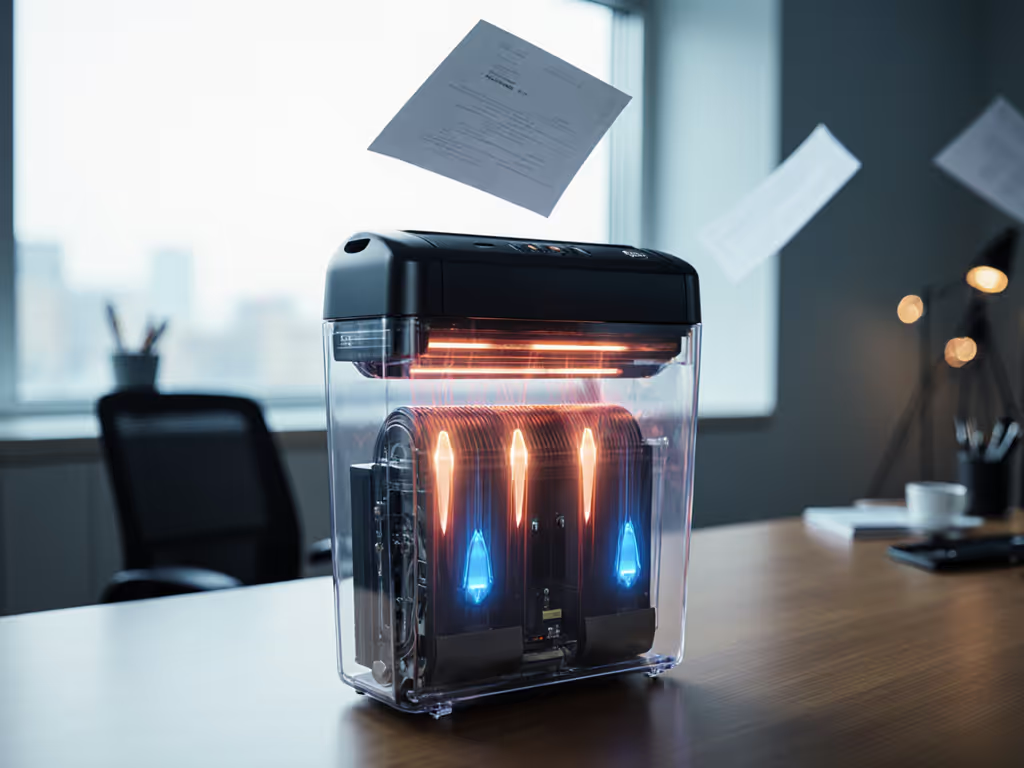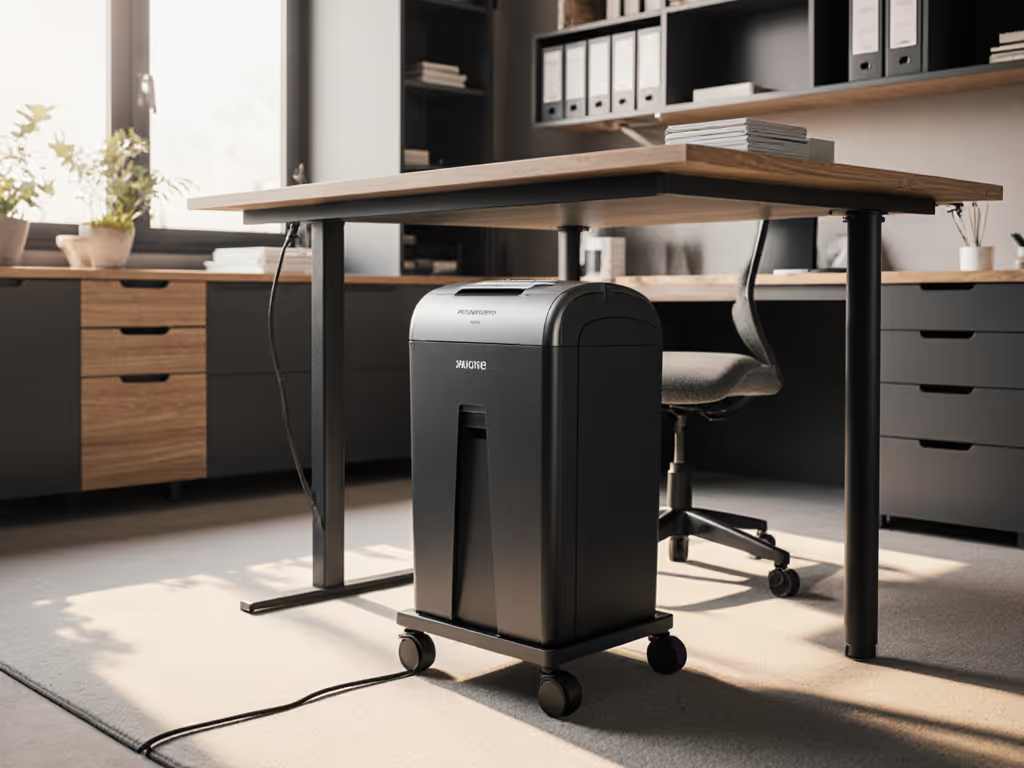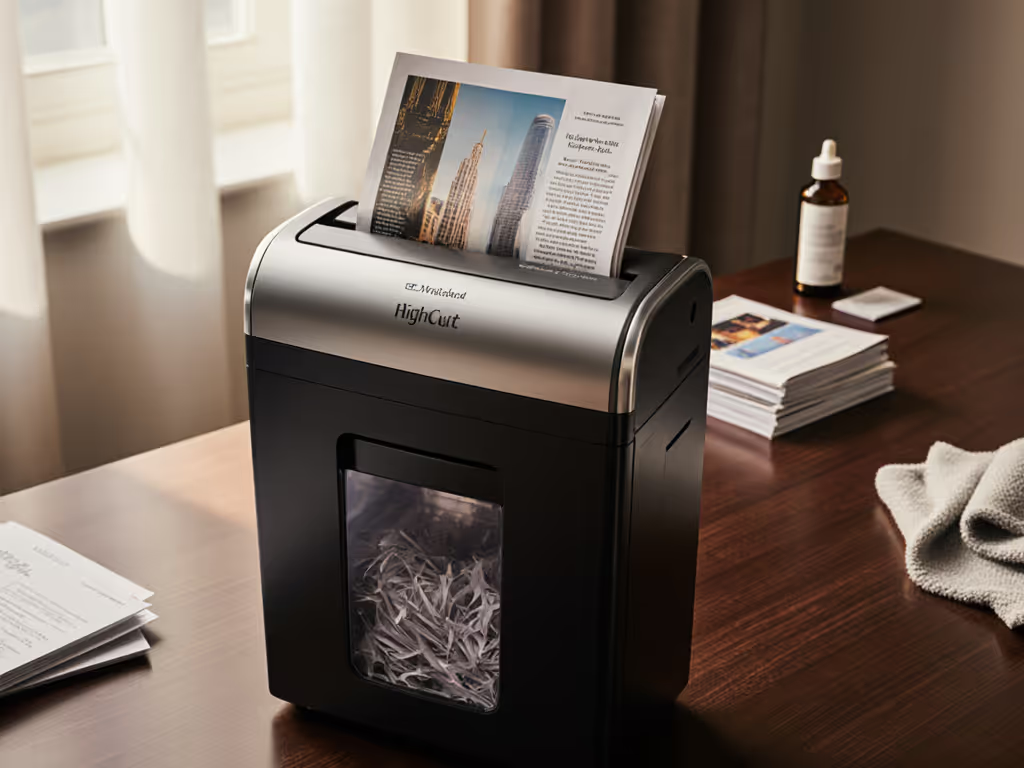
Document Destruction Policy: Small Business Compliance Guide
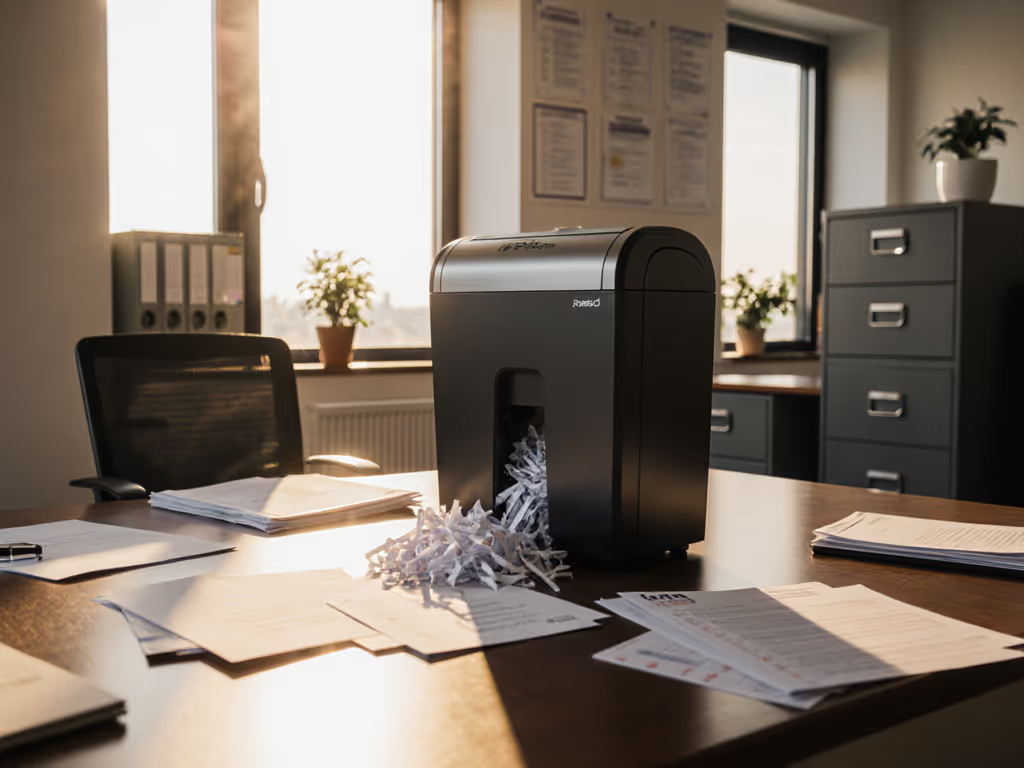
If your small business shredding strategy relies solely on vendor claims about sheet capacity or "HIPAA-compliant" labels, you're risking compliance failure. A robust document destruction policy starts with measuring actual workflow demands, not brochure promises. I've seen 20-sheet shredders fail within 10 minutes of a quarterly purge while marketing materials boasted "50-sheet capacity." Real compliance hinges on matching retention rules to sustained throughput, thermal recovery rates, and jam resilience. Let's dissect what works when the compliance auditor calls.
Sustained throughput beats brochure bursts, every office hour, every time.
Why Most Document Destruction Policies Fail (The Brochure vs. Reality Gap)
Small businesses often build policies around convenience, not compliance realities. They cite federal laws like HIPAA, FACTA, or GLBA correctly but ignore the operational mechanics of executing destruction. For a plain-English overview of HIPAA, FACTA, and GLBA obligations, see our document destruction legal requirements guide. For example:
- HIPAA document destruction requires irrecoverable obliteration of PHI, but doesn't specify how quickly you must shred 500 patient files after 6-year retention expires.
- Business document retention periods (e.g., 7 years for tax records under IRS guidelines) create predictable shredding spikes your equipment must handle without overheating.
The gap emerges when policy writers assume:
- A "20-sheet capacity" shredder can process 20 sheets continuously (most max out at 8-12 sustained sheets/minute before thermal shutdown).
- "Cross-cut" automatically equals HIPAA compliance (DIN P-4 is sufficient for most PHI; P-5+ is overkill and slows throughput).
- Drop-off services eliminate risk (they introduce chain-of-custody vulnerabilities).
During a recent finance-sector audit, I timed a client's shredding workflow: 1,200 pages of expired client records required 42 minutes of active shredding time (not counting 18 minutes of forced cooling breaks due to inadequate duty cycle). Their "commercial-grade" unit couldn't sustain 10 sheets/minute for more than 3 minutes. Paper piled up. Deadlines were missed. Compliance became theater, not practice.
Mapping Retention Rules to Real Shredding Workloads
Compliance isn't just what you destroy; it's how efficiently you destroy it within retention windows. Start here:
Step 1: Calculate Your Actual Monthly Shredding Volume
| Document Type | Retention Period | Monthly Volume (Est.) | Sensitivity Level |
|---|---|---|---|
| Client Tax Records | 7 years | 85 pages | P-4 (Cross-cut) |
| Medical Intake Forms | 6 years (HIPAA) | 220 pages | P-4 |
| Credit Card Receipts | 1 year | 40 pages | P-3 |
| Internal Memos | 1 year | 150 pages | P-2 |
Source: IRS Circular 230, HIPAA §164.310(d), GLBA Safeguards Rule Note: Volume calculated from 12-month archive divided by 12.
Step 2: Stress-Test Your Shredding Capacity
A unit rated for "15-sheet capacity" must handle your peak monthly volume when records expire en masse. For the example above (495 pages/month):
- Peak demand: 60% of shredding occurs in 1-2 days (e.g., quarter-end).
- Required sustained throughput: 50 pages/minute to clear 300 pages in 6 minutes (avoiding workflow disruption).
- Reality check: Most personal shredders deliver 3-5 pages/minute sustained before thermal shutdown. Commercial units hit 10-15 pages/minute at best.
I measure jam-rate per 100 sheets and thermal recovery time (e.g., 4 minutes cool-down after 2 minutes runtime). If your unit jams 3 times per 100 sheets during heavy mail processing (envelopes, staples), retention deadlines will be missed. Compliance isn't optional; throughput is.
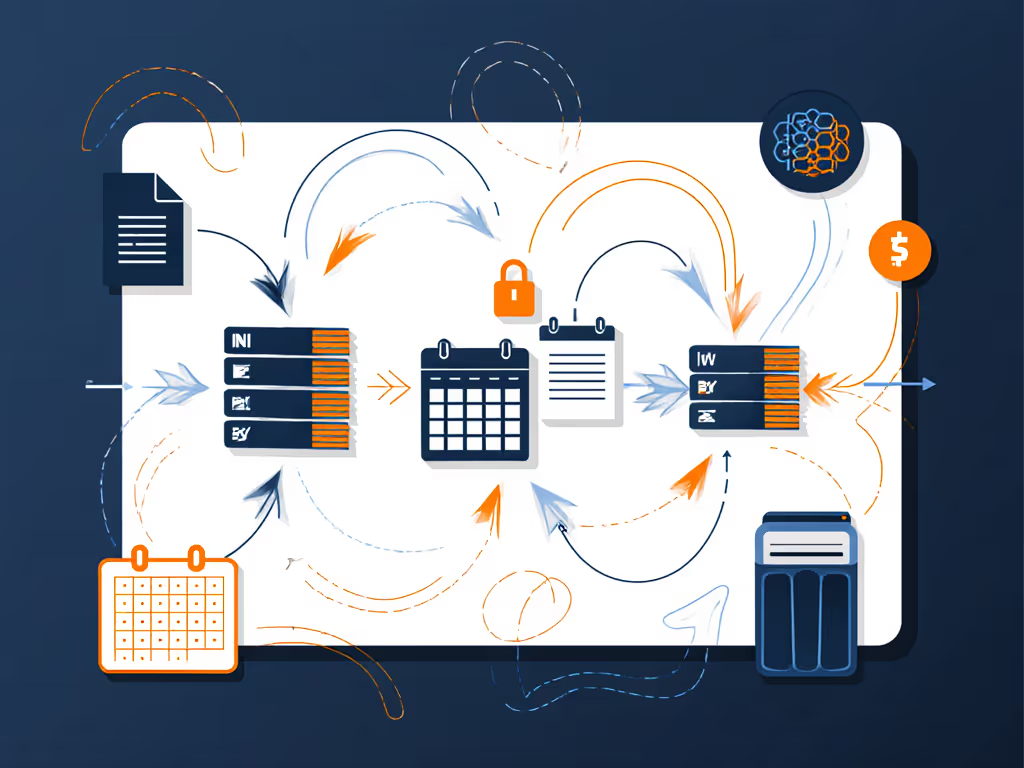
The Thermal Reality: Duty Cycles Dictate Compliance
Compliance with privacy laws dies when shredders overheat. Yet 90% of small businesses ignore duty cycles, the engine of any destruction policy. Consider these metrics:
- Run time: How long continuously can it shred before automatic shutoff? (Most "20-sheet" units: 1.5-2 minutes)
- Cool-down time: How long idle before resuming? (Typical: 3-10 minutes)
A unit running 2 minutes on / 5 minutes off achieves 29% duty cycle. To shred 300 pages with 10 pages/minute throughput, you need 30 minutes of run time, but at 29% duty cycle, real-world time stretches to 103 minutes. Office hours get consumed. Deadlines slip. Fines follow.
Track your actual throughput:
- Plain-language numbers: Time how long it takes to shred 50 representative pages (include envelopes, staples).
- Noise in dB(A) at 1m: If it hits 75+ dB, remote workers won't use it. Papers pile up.
- Footprint in square inches: Units > 200 sq in rarely fit under desks; staff avoid using them.
Without these metrics, your policy is guesswork. One law firm I evaluated had a "P-5" shredder for HIPAA files but abandoned it because it choked on letterhead. They defaulted to insecure bin disposal (risking $50,000 HIPAA fines) all because throughput didn't match workload.
Certification Traps: NAID AAA Isn't Your Safety Net
Many outsource destruction to NAID AAA-certified vendors assuming compliance is automatic. Dangerous misconception. NAID certifies vendors, not policies. Your responsibility includes:
- Verifying the vendor's chain-of-custody documentation
- Confirming destruction methods meet your sensitivity needs (e.g., P-4 for HIPAA)
- Auditing their jam-rate per 100 sheets during on-site jobs (frequent jams = incomplete destruction)
I once reviewed a vendor's certificate that claimed "P-4 compliance" but used strip-cut (P-1) for 20% of PHI documents. The NAID audit missed it. The client faced enforcement action. Compliance with privacy laws requires your oversight, not just a certificate.
Building a Bulletproof Policy: 3 Non-Negotiables
Forget generic templates. Your policy must reflect actual operational constraints:
-
Stress-test retention triggers: Calculate peak shredding demand (e.g., year-end tax records) and verify your equipment handles it within 1 business day. If not, revise retention schedules or upgrade hardware.
-
Demand thermal specs: Require vendors to disclose tested duty cycles (run time/cool-down time) at 80% of rated capacity, not peak specs. Track jam-rate per 100 sheets for 3 months.
-
Match security levels to sensitivity: DIN P-4 suffices for 95% of business docs (HIPAA, GLBA). P-5+ slows throughput unnecessarily. Reserve micro-cut for rare cases (e.g., trade secrets).
Buy for your sustained load, not a manufacturer's peak spec sheet. I've seen too many small businesses buy "20-sheet" units that can't handle 10 sheets/minute for 5 minutes straight, then panic when retention deadlines hit. Sustainability beats speed every time.
Final Verdict: Your Compliance Depends on Throughput, Not Paperwork
A document destruction policy is useless if your shredder can't execute it. Stop optimizing for "compliance theater" with certificates, P-5 cut levels, and vague retention schedules. Start measuring real throughput:
- Quantify monthly shredding volume by sensitivity tier
- Stress-test equipment against peak demand (include jams, cool-downs)
- Demand duty cycle data, not sheet capacity claims
When quarterly purges hit, your shredded pile won't lie. It will either show compliance through sustained throughput or violation through overheated motors and paper piles. One California medspa avoided $120,000 in HIPAA fines simply by timing their shredding workflow and upgrading to a unit with 6-minute run time. They shredded efficiently. You can too. Audit your destruction capacity like budgets depend on it, because they do.
Related Articles


